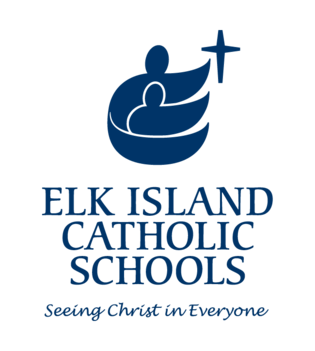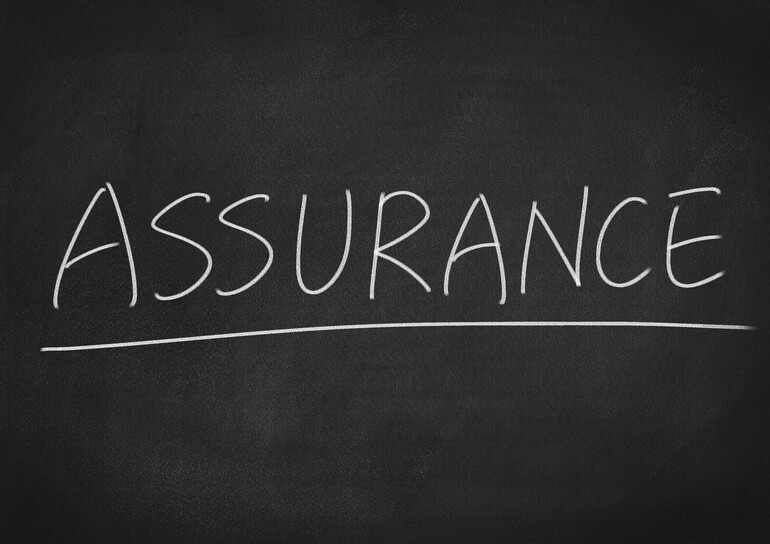EICS Assurance Dashboard Highlights Our Success Measures

EICS has developed a performance measure called the Assurance Dashboard for the entire Division and each school community to review individual school performance within the context of our Divisional priorities. By looking at this regularly updated Assurance Dashboard, our EICS school family can reflect on the results and see what improvements we are continually making to best serve our students and staff.
EICS 2022-2026 Assurance Dashboard
EICS 2022-2026 Division Assurance Plan
------------
Historical Data
EICS 2018-2022 Assurance Dashboard
EICS 2018-2022 Division Assurance Plan
EICS Assurance Background and Process

Alberta's Education system is continually seeking improvement. There are new professional practice standards for teachers, principals and system leaders; a major curriculum program renewal; a high school flexibility initiative; and new legislation and commitments to making schools caring, safe, and welcoming.
School authority planning is also an integral component of continual improvement. The Elk Island Catholic Schools Board of Trustees, in collaboration with the Central Learning Leadership Team and key stakeholders, work collaboratively to develop a plan that sets our educational goals, outcomes, and strategies.
Based on the following guiding principles, we will provide assurance and:
- Share responsibility for student growth and achievement.
- Build professional capacity and a commitment to continuous improvement.
- Facilitate communication and engagement with all education partners.
- Engage and communicate regularly with education partners.
- Use evidence from a variety of sources to be responsive and transparent in decision-making.
- Reflect local and societal context, enabling flexible responses.
- Recognize the unique learning needs of students and foster equitable and inclusive learning environments.
- Commit to fiscal responsibility and effective stewardship of resources.
- Provide a structure to ensure that what is measured and reported is consistent with the best interest of student growth and achievement, and the goals of education in Alberta.
The planning cycle involves the following steps:
- Developing and updating each year Division and School Assurance plans that align provincial goals, outcomes, and performance measures and the Division's vision, mission and values.
- Promoting community engagement.
- Preparing priority based budgets aligned to support student learning, achieve goals, and improve results.
- Implementing strategies aligned to Goals and Outcomes.
- Using data to highlight successes and identify areas for improvement.
- Communicating with stakeholders (staff, students, parents, guardians, school councils, the public, and Alberta Education) about school authority and school plans and results.
Domains for Public Assurance and Desired States
The Division Assurance Plan is organized around five primary interconnected assurance domains and corresponding desired states. The desired states are key indicators of public assurance that are specific, measurable, and achievable.
1. Student Growth and Achievement
Student Growth and Achievement refers to the ongoing progress students make
in their learning, relative to identified provincial learning outcomes and consistent
with their needs, interests, and aspirations.
Public assurance occurs when the public has trust and confidence that students
demonstrate citizenship, engage intellectually, and grow continuously as learners.
Key Elements:
- Students use ongoing assessment feedback to reflect continuously on their progress, identify strengths and areas of need, and set new learning goals.
- Students achieve prescribed provincial learning outcomes, demonstrating strengths in literacy and numeracy.
- Students are active, healthy, and well.
- Students apply knowledge, understanding, and skills in real-life contexts and situations.
- Students advance reconciliation by acquiring and applying foundational knowledge of First Nations, Métis, and Inuit experiences.
- Students demonstrate understanding and respect for the uniqueness of all learners.
2. Teaching and Leading
Teaching and Leading refers to teachers and leaders analyzing the learning context (attending to local and societal considerations), and applying the appropriate knowledge and abilities to make decisions resulting in quality teaching, leading, and optimum learning for all.
Public assurance occurs when the public has trust and confidence that certificated teachers and certificated leaders demonstrate their respective professional practice standards (TQS*, LQS* and SLQS*).
Key Elements:
- Teachers and leaders respond with skill and competence to the unique learning needs; interests; and cultural, social, and economic circumstances of all.
- Teachers and leaders improve their professional practice through collaborative engagement in processes of growth, supervision, and evaluation.
- Collaboration amongst teachers, leaders, students, and their families, as well as other professionals, enables optimum learning.
- All teachers and leaders are accountable to a standard of professional conduct and a standard of professional practice.
- University teacher education, university leadership education, and ongoing professional learning programs prepare teachers and leaders to meet the standards for professional practice.
- Teachers and leaders use a range of data arising from their practice to inform cycles of evidence-based continuous learning.
3. Learning Supports
Learning Supports refers to the mobilization of resources (including expertise, facilities, and human and community services) required to demonstrate shared, system-wide responsibility for all children and students. The application of these resources ensures quality teaching, leading, and optimum learning for all.
Public assurance occurs when the public has trust and confidence that resources are managed effectively in establishing learning environments where local and societal context is recognized; diversity is embraced; a sense of belonging is emphasized; and all learners are welcomed, cared for, respected, and safe.
Key Elements:
- Learning environments are welcoming, caring, respectful, and safe.
- Learning environments are adapted as necessary to meet learner needs, emphasizing a sense of belonging and high expectations for all.
- Education partners fulfill their respective roles with a shared understanding of an inclusive education system.
- Students and their families work in collaboration with education partners to support student learning.
- The school community applies the resources needed to support First Nations, Métis, and Inuit student achievement.
- Cross-ministry initiatives and wrap-around services enhance the conditions required for optimal learning.
- Infrastructure (e.g., technology and transportation services) supports learning.
4. Governance
Governance refers to the processes by which policy leaders attend to local and societal context; determine strategic direction; evaluate policy implementation; and manage fiscal resources to ensure learning supports, quality teaching, leading, and optimum learning for all.
Public assurance occurs when the public has trust and confidence that policy leaders demonstrate stewardship of system resources with an emphasis on student success, generative community engagement, transparency, and accountability.
Key Elements:
- Governors engage students and their families, staff, and community members in the creation and ongoing implementation of a shared vision for student success.
- Legislation, policy, and regulation provide clarity regarding the roles and responsibilities of education partners in matters of governance.
- Fiscal resources are allocated and managed in the interests of ensuring student success, in alignment with system goals and priorities and in accordance with all statutory, regulatory, and disclosure requirements.
- Curriculum is relevant, clearly articulated, and designed for implementation within local contexts.
- Governors in school authorities and in government employ a cycle of evidence-based continuous improvement to inform ongoing planning and priority setting, and to build capacity.
5. Attending to Local and Societal Context
Attending to Local and Societal Context refers to the engagement practices of schools and communities, with support from the broader system, in identifying and responding to the learning needs; interests; aspirations; and diverse cultural, social, and economic circumstances of all students.
Public assurance occurs when the public has trust and confidence that the education system responds proactively to local and societal contexts.
Key Elements:
- Staff and community stakeholders attend responsively to the unique and diverse cultural, social, and economic factors that impact our students’ aspirations and learning needs.
Continuous Improvement Cycle
EICS actively reviews ongoing data when planning, engaging and reporting with our stakeholders.

